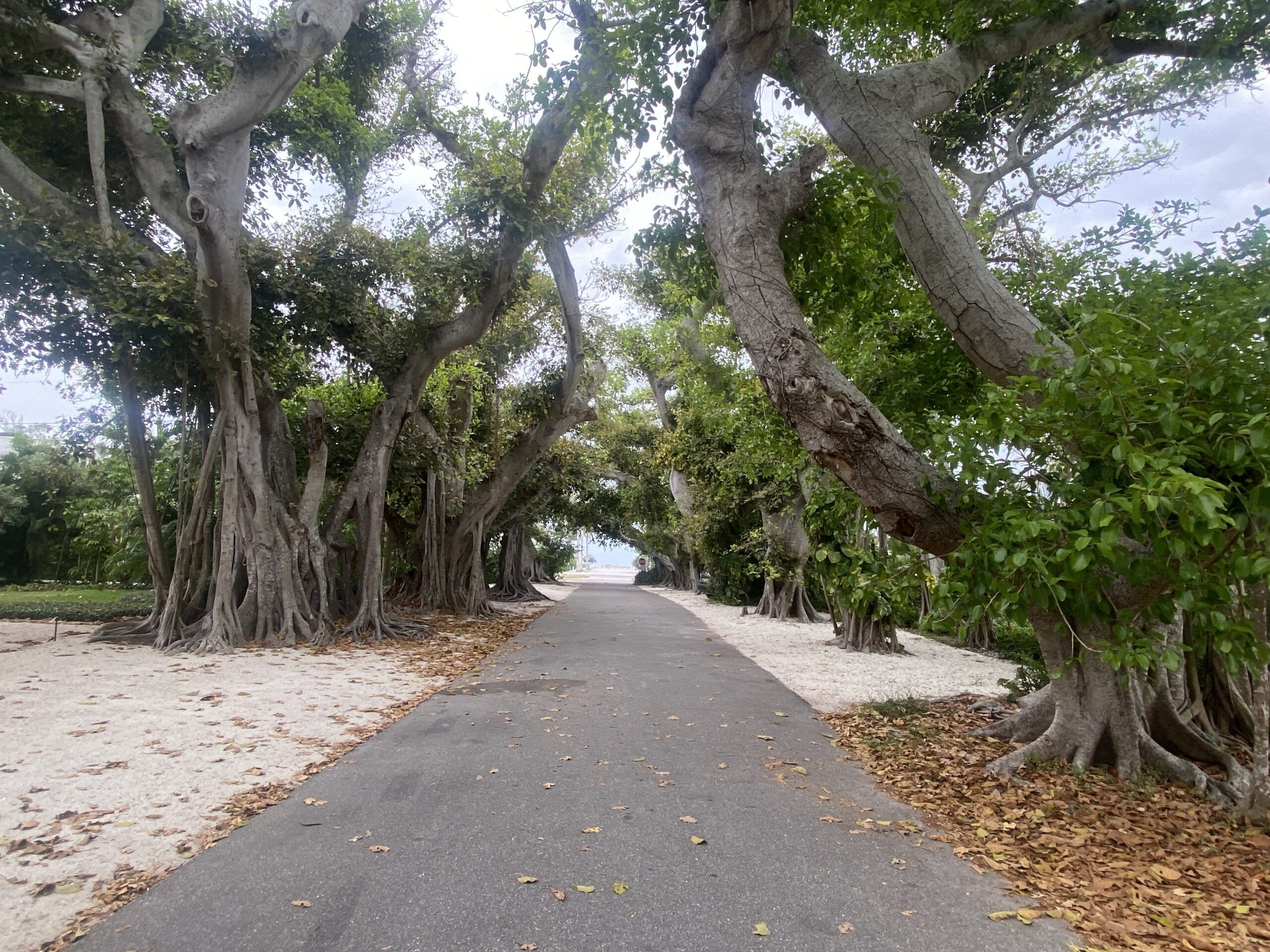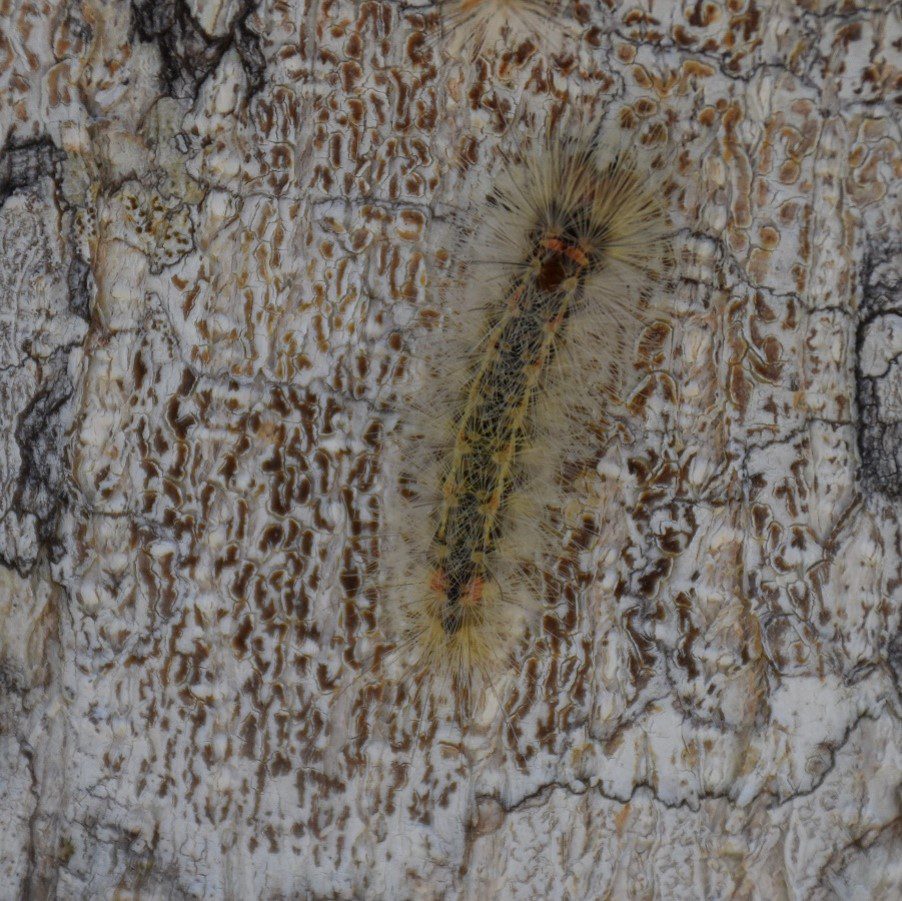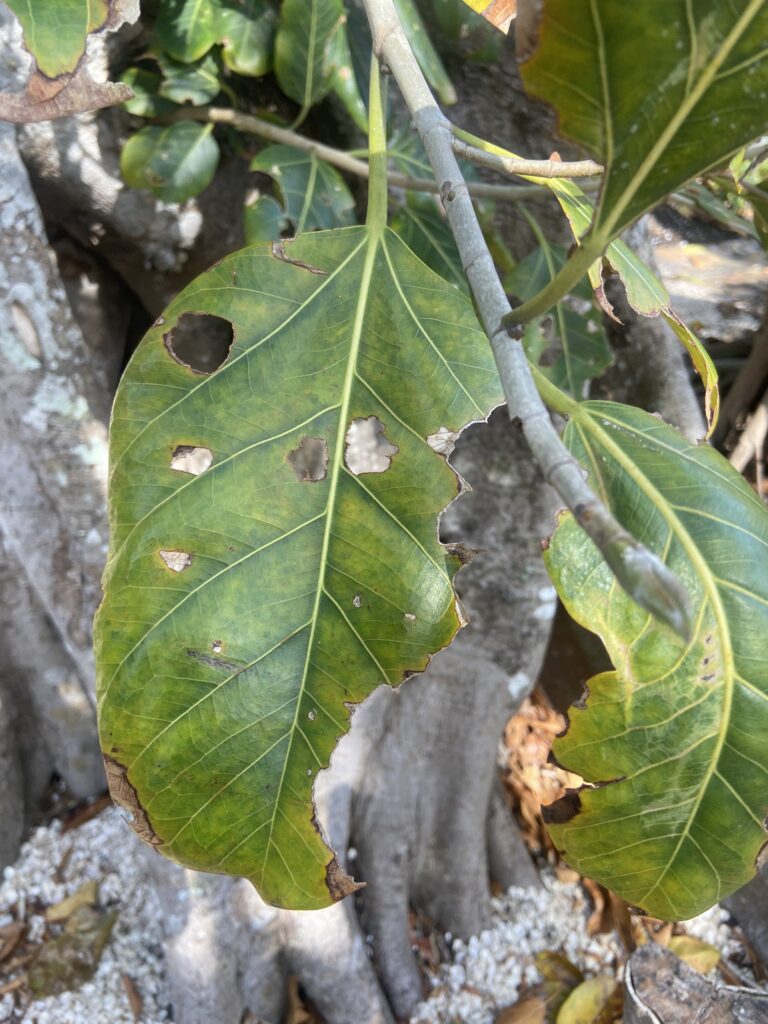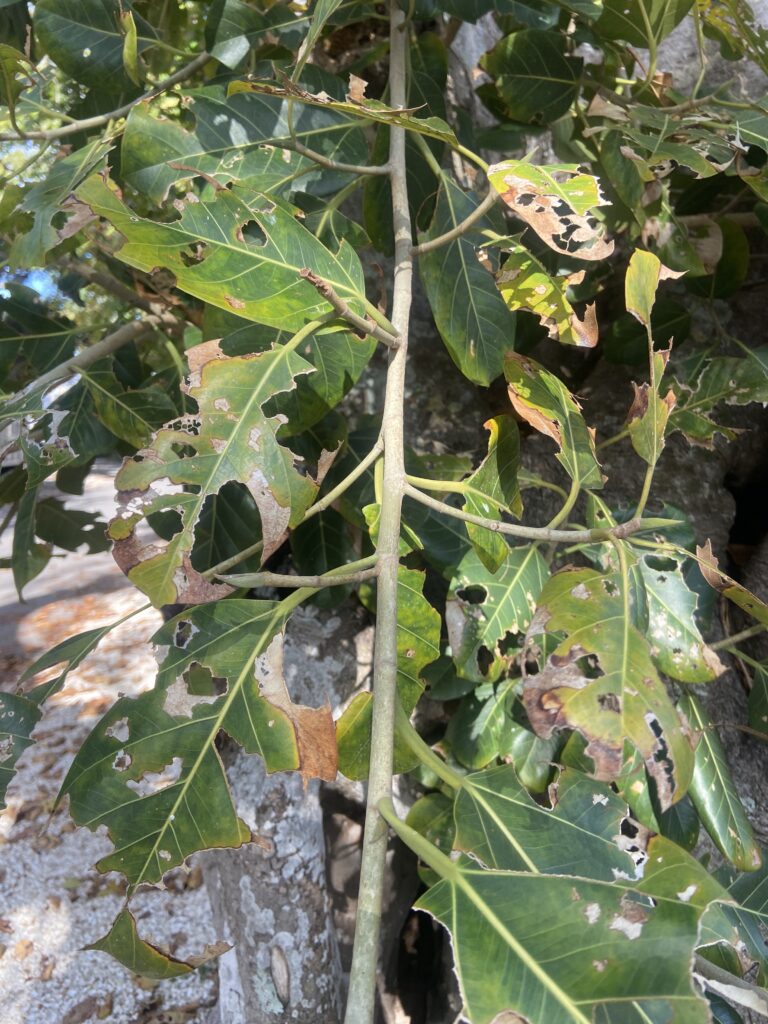Banyan Street seems to recover after April caterpillar feast

Caterpillars earlier this month denuded many of the leaves of the historic banyan trees on Banyan Street, thought it appears that the trees are beginning to recover as of this week. Visitor Colleen Flynn noticed the issue on a recent visit and contacted the Boca Beacon.
“We were last here for a couple of weeks over Thanksgiving,” said Flynn. “We commented how beautiful and strong the banyans looked when compared to the rest of trees/greenery on the island after Ian.”

Othe most recent visit, it had changed, though the green has returned as of this week.
“Now just a few months later, it’s shocking how eaten up they look,” Flynn said. “Many look as though the majority of their leaves are completely gone. It’s not just the trees on Banyan Street, but seemingly everywhere.”

Neighbor Maureen Ruettger had also inquired about the trees. Ruettger is not only very protective of Banyan Street, as are its other residents, but she functions as an occasional tour guide about their history. Because there is no sign there, she often is out explaining the story of the street to visitors.
“We love the fact that people enjoy it,” said Ruettger. But sometimes the beauty is a challenge. A slew of recent weddings have made it difficult to get in and out of the driveway in busy season.
Rick Joyce, arborist expert on the island and author of a report on the street, has been conferring with Lee County Extension Agent Stephen Brown on the issue. Joyce is a former arborist for Lee County.

Joyce and Brown believe that the culprit is likely to be the Edward’s wasp moths.
“These were plentiful on Sanibel some few months after Hurricane Ian,” said Brown, by email.
The Edwards wasp moth, or Lymire edwardsii, damaged a number of banyan trees on Sanibel after Hurricane Ian. In some years, the moths are controlled by predators, but often storms wipe them out. They feed in April; last year they completely ate the leaves of the Sanibel banyans. The moths chew irregular shapes on the leaves.
The moths are native, and are pollinators, so they are important parts of the whole system.
The moth was discovered by Augustus Radcliffe Grote, an English entomologist who came to Florida at the behest of the United States Entomological Commission.
Banyan report first made in 2002
Certified Arborist Rick K. Joyce published a Banyan Tree Assessment on Banyan Street all the way back in May of 2002. The report states that of the 31 banyan trees planted on Banyan Street in 1915, most were in overall good health and condition. Leaves and branching were thick and had good color. Some of the trunks had been nicked with some minor carved graffiti.
The program to preserve the trees has been successful; in spite of damage during hurricanes, the trees have recovered each time.
In 2002, five of the trees at the northwest corner of the intersection of Banyan Street and Gilchrist Avenue showed stress – canopies were thinner, and leaves showed signs of yellowing. This was attributed to the wind and saltwater ponding in the area from Hurricane Gabrielle on Sept. 11, 2001. The most western tree on the corner was also in poor condition, with both of the two primary trunks decayed or dead. Additionally, residents nearby reported freezes that caused major leaf drop of two feet or more of leaves that required cleanup with heavy equipment.
Joyce’s 2002 recommendations:
- Annual structural pruning and removal of hazardous, dead or crossing branches
- Bi-annual fertilizer application with an acid forming fertilizer formula
- Request that adjacent property owners not cut all aerial roots that develop and extend to the ground
- Consider making Banyan Street one-way to reduce the need for pruning for dual travel lane clearance
- Afford additional regulatory protection for banyan trees and protection against acts of vandalism
- Use caution while using herbicides such as Round-Up near the trees
- New Farlow’s restaurant Chophouse285 anchors Englewood’s Dearborn Street
- Schmaltz & Pepper for All That Jazz
- Charlotte meets on beach access; Placida park project moves forward
- World of mangroves the subject of conservation lecture series talk at Englewood Chamber of Commerce
- Magano at Camera Club talks on light-painting and photography









